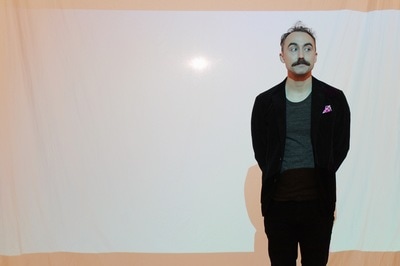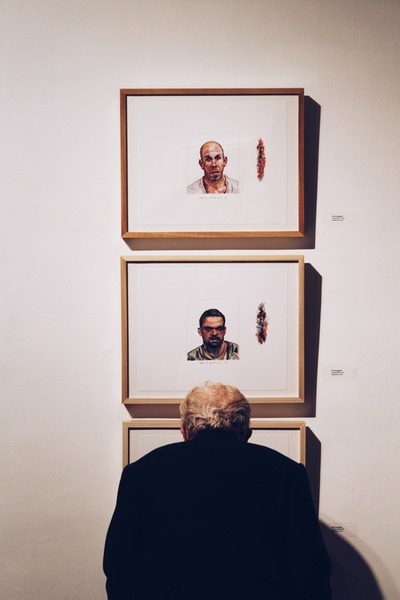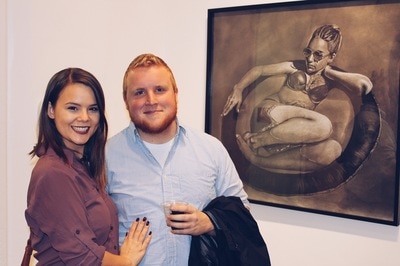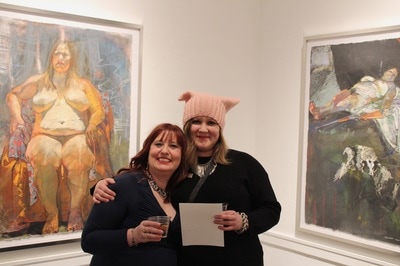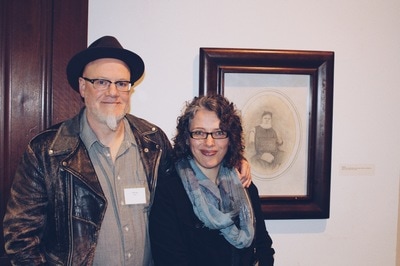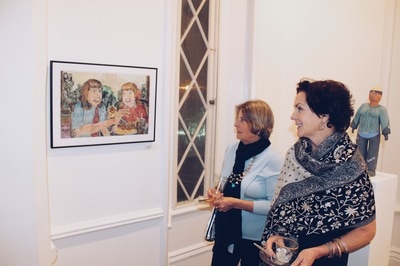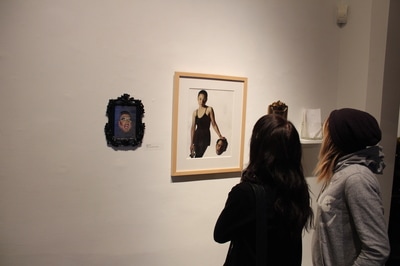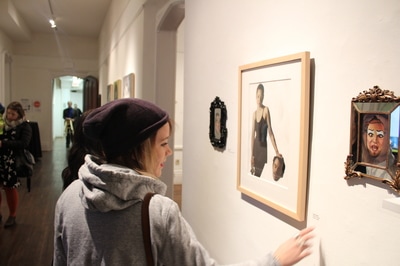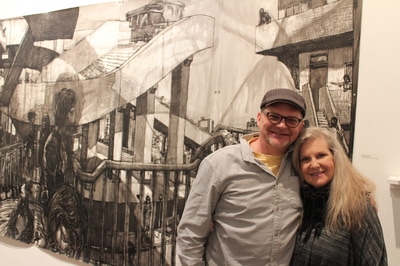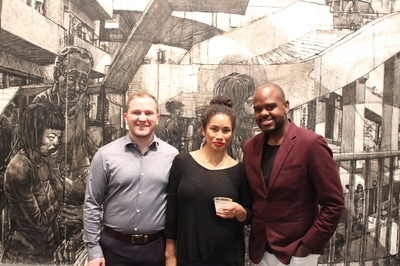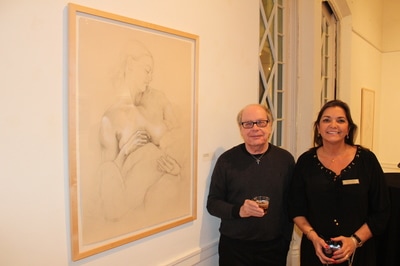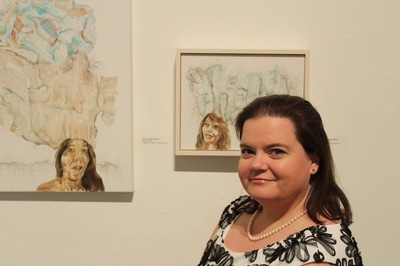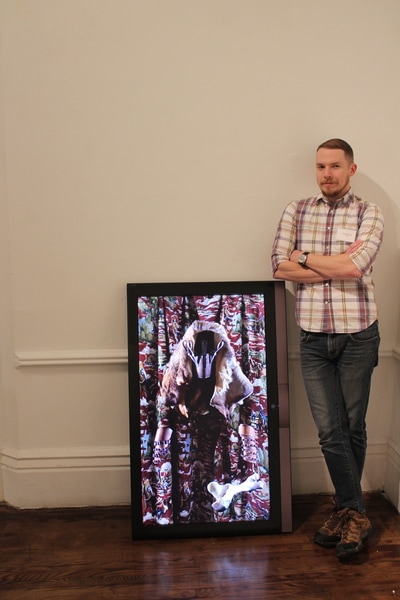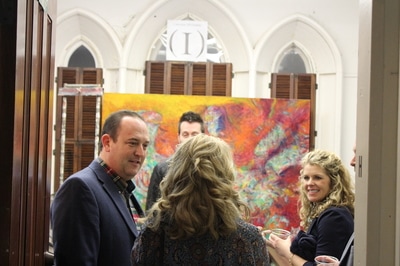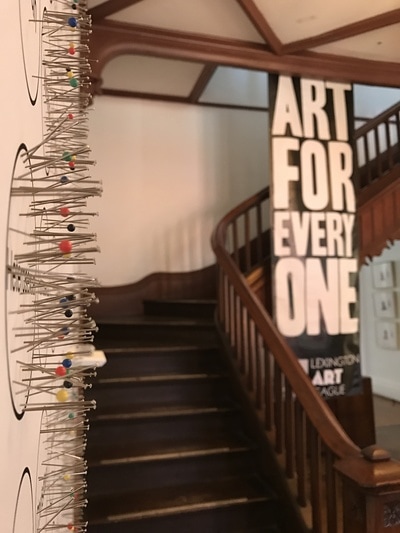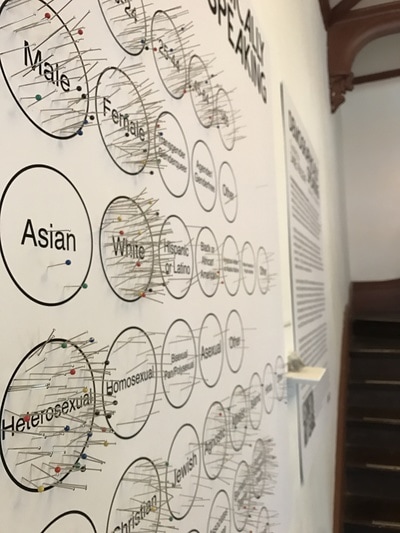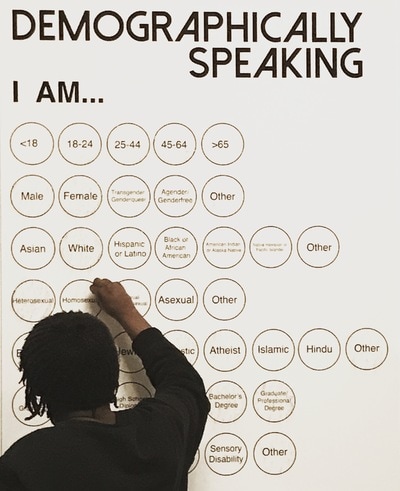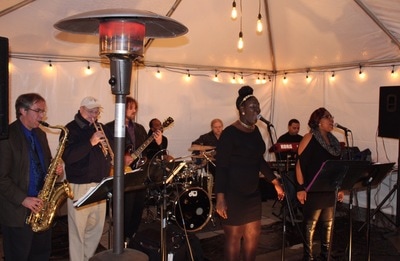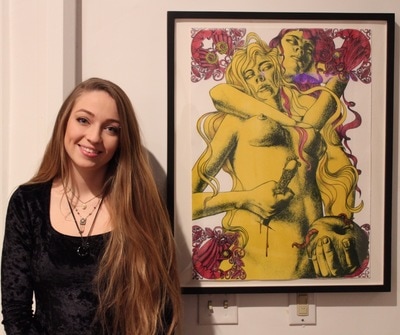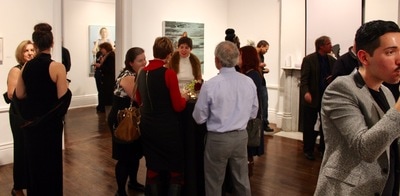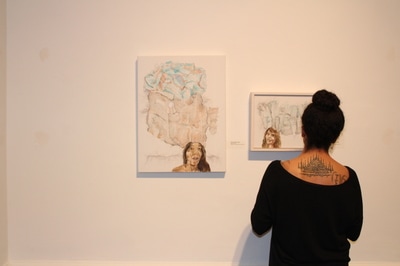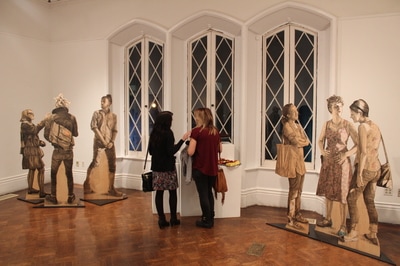Demographically Speaking, A Figurative Exhibition
January 27- February 18, 2017
Curated by: Daniel Pfalzgraf
Curatorial Statement
So, whose stories are being told in the art world? Art museums and institutions in the United States have a notorious reputation of presenting heterosexual, white male perspectives and interests, both in the artists that are represented and the subjects they present. But is that viewpoint reflective of those who are visiting the museums? Or is that perspective something that (intentionally or not) reinforces the long-held power structure of American society for visitors of museums? Conventional wisdom and mission statements would assuredly say that that is not the case.
In 1985, the artist collective "Guerrilla Girls" began a tireless campaign of pointed commentary on the art world, highlighting discrepancies unabashedly. One famous billboard from 1989 asked the question, "Do women have to be naked to get into the Met. Museum?" Answering their query with, "Less than 5% of the artists in the modern art sections are women, but 85% of the nudes are female." In 2012, the Guerrilla Girls updated the public by revisiting that iconic billboard with new statistics that reflect our more enlightened times.
So too has the growth in LGBTQ Pride and #BlackLivesMatter movements in the 21st century added to the call for greater visibility, understanding, respect, and equal treatment of populations outside of the ruling majority. We are a diverse society, and one that it rapidly changing. In 2014 the U.S. Census Bureau found that for children under five, no singular racist/ethnic group controlled a majority of the population, which is just the beginning of a historical shift. It was further added that by 2020, more than half of all children under the age of 18 are expected to be of a minority race or ethnicity, and by 2060, 56 percent of the total population of the U.S. will hold that distinction.
This exhibition does not solve the issues that museums, curators, artists, collectors, and the viewing public within the art world face today. In fact, in many respects it fails to live up to what I had hoped it would be. Change is difficult, but if museums and galleries want to promote inclusiveness, then concerted efforts to be inclusive -- on all fronts -- need to be made. In order to attract and grow audiences who develop an appreciation for the power of art, it is essential to exhibit work that audiences can relate to. And what better opportunity to develop connections with audiences than with a figurative exhibition.
So, whose stories are being told in the art world? Art museums and institutions in the United States have a notorious reputation of presenting heterosexual, white male perspectives and interests, both in the artists that are represented and the subjects they present. But is that viewpoint reflective of those who are visiting the museums? Or is that perspective something that (intentionally or not) reinforces the long-held power structure of American society for visitors of museums? Conventional wisdom and mission statements would assuredly say that that is not the case.
In 1985, the artist collective "Guerrilla Girls" began a tireless campaign of pointed commentary on the art world, highlighting discrepancies unabashedly. One famous billboard from 1989 asked the question, "Do women have to be naked to get into the Met. Museum?" Answering their query with, "Less than 5% of the artists in the modern art sections are women, but 85% of the nudes are female." In 2012, the Guerrilla Girls updated the public by revisiting that iconic billboard with new statistics that reflect our more enlightened times.
So too has the growth in LGBTQ Pride and #BlackLivesMatter movements in the 21st century added to the call for greater visibility, understanding, respect, and equal treatment of populations outside of the ruling majority. We are a diverse society, and one that it rapidly changing. In 2014 the U.S. Census Bureau found that for children under five, no singular racist/ethnic group controlled a majority of the population, which is just the beginning of a historical shift. It was further added that by 2020, more than half of all children under the age of 18 are expected to be of a minority race or ethnicity, and by 2060, 56 percent of the total population of the U.S. will hold that distinction.
This exhibition does not solve the issues that museums, curators, artists, collectors, and the viewing public within the art world face today. In fact, in many respects it fails to live up to what I had hoped it would be. Change is difficult, but if museums and galleries want to promote inclusiveness, then concerted efforts to be inclusive -- on all fronts -- need to be made. In order to attract and grow audiences who develop an appreciation for the power of art, it is essential to exhibit work that audiences can relate to. And what better opportunity to develop connections with audiences than with a figurative exhibition.
Gallery Images
Exhibition Images
Featured Artists
Martin Beck, John Brooks , Carrie Marie Burr, Dick Dougherty, T Fife , Andrew Hardin, Jennifer Hart, Shayne, David Iacovazzi-Pau, jeremy jones, Robert , Eva Larsson, Angel Luna, Britt Spencer , Sarah Brown , Grace Mayeur, Yvonne Petkus, "Ragland, Hayla M", Randy Simmons, Patrick Smith, James Southard, Denise Sanabria, Sheldon Tapley, Chris Troutman, Damien Vines
Exhibition
Lexington Art League was excited to announce the return of our ever-popular figure show which featured an exclusive evening of art, music, and dancing. The Fourth Friday for "Demographically Speaking, a Figurative Exhibition" provided a look at an evocative exhibition curated by Daniel Pfalzgraf, Chief Curator of the Carnegie Center for Art & History in New Albany, Indiana. Posing the question, 'whose stories are being told in the art world?' the new dimension and unique perspective Pfalzgraf brought to the traditional figure or nude show aimed to provoke audiences to consider the diversity of our city, our region, and our country through stories of identity told through art.
The month's Fourth Friday featured free open easels for live figure drawings with sessions each hour led by three of the artists that were represented in the exhibition.
Music was provided by DJ Leeroy, and food/drinks were provided by Sweet LiLu's.
Preview Party - 1.13.17
The Demographically Speaking preview party featured music by Joslyn & The Sweet Compression and video installations by artist Nick Warner.
The Opening Preview Party was graciously sponsored by Marnie Clay Holoubek, Enderle Besten Dieruf, PLLC, QX.net, West Sixth Brewing, MD-Update KY. All of the equipment for this work was graciously provided by LAVA Systems/Security.
Lexington Art League was excited to announce the return of our ever-popular figure show which featured an exclusive evening of art, music, and dancing. The Fourth Friday for "Demographically Speaking, a Figurative Exhibition" provided a look at an evocative exhibition curated by Daniel Pfalzgraf, Chief Curator of the Carnegie Center for Art & History in New Albany, Indiana. Posing the question, 'whose stories are being told in the art world?' the new dimension and unique perspective Pfalzgraf brought to the traditional figure or nude show aimed to provoke audiences to consider the diversity of our city, our region, and our country through stories of identity told through art.
The month's Fourth Friday featured free open easels for live figure drawings with sessions each hour led by three of the artists that were represented in the exhibition.
Music was provided by DJ Leeroy, and food/drinks were provided by Sweet LiLu's.
Preview Party - 1.13.17
The Demographically Speaking preview party featured music by Joslyn & The Sweet Compression and video installations by artist Nick Warner.
The Opening Preview Party was graciously sponsored by Marnie Clay Holoubek, Enderle Besten Dieruf, PLLC, QX.net, West Sixth Brewing, MD-Update KY. All of the equipment for this work was graciously provided by LAVA Systems/Security.

